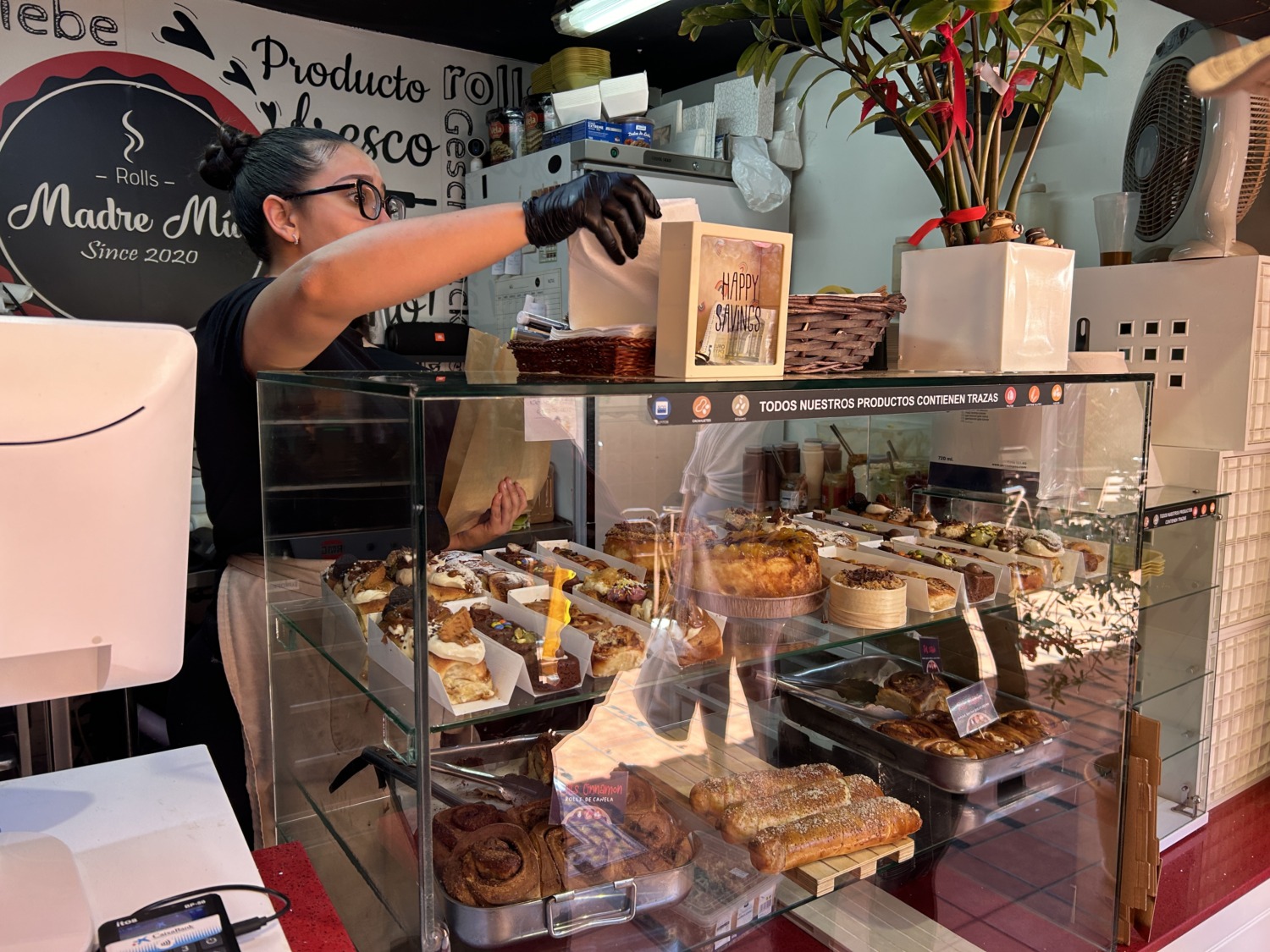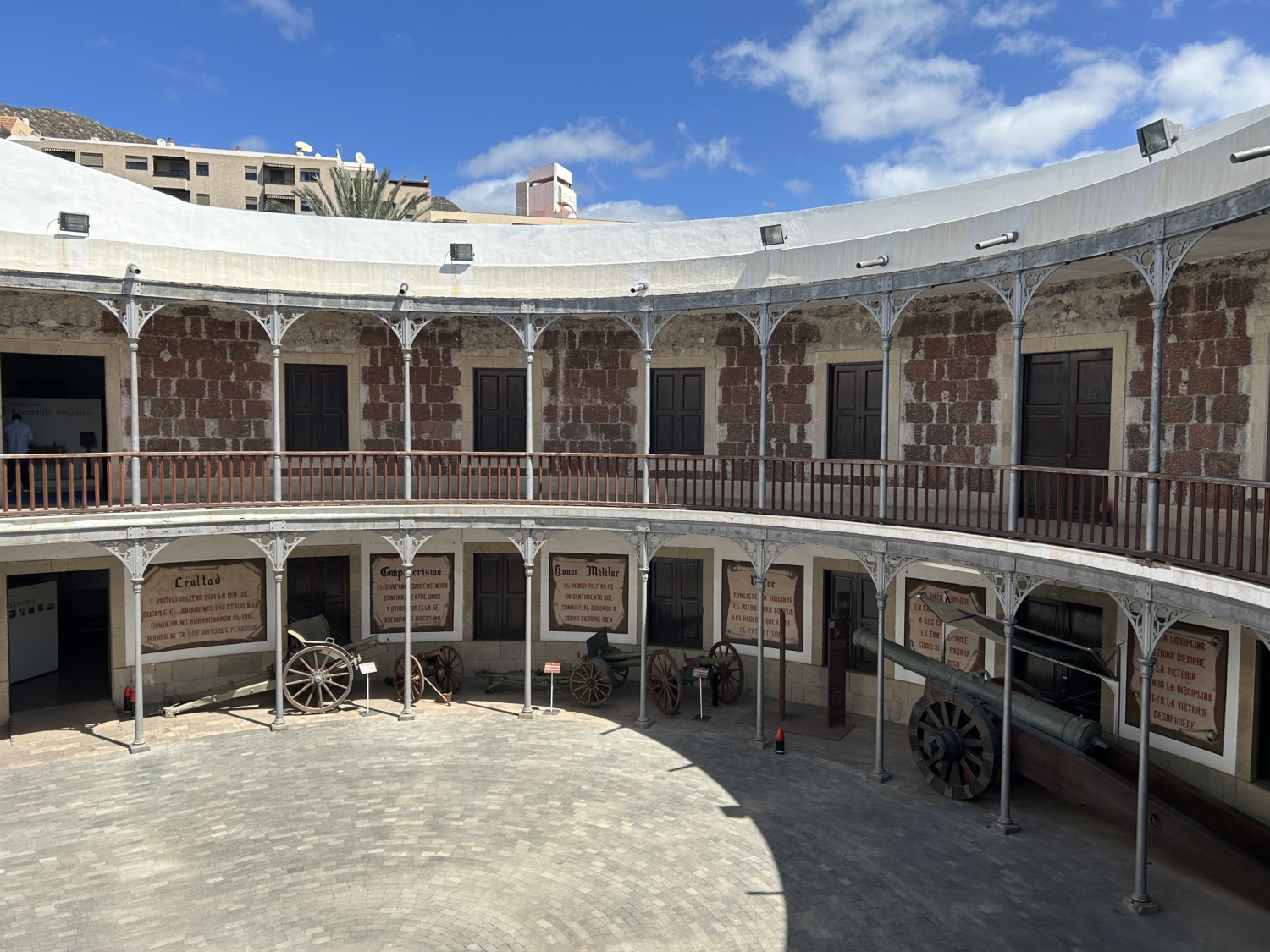The day after our wonderful visit to Funchal, Tom and I were off the ship exploring Santa Cruz de Tenerife in the Canary Islands. People in Europe go to the Canary Islands for vacation the way people in the United States go to the Caribbean. There were 16 million visitors to the Canary Islands in 2023. The islands aren’t far away, but they are exotic enough to be interesting and warm enough for laying out on the beach.
The Canary Islands are a Spanish autonomous community and archipelago in Macaronesia in the Atlantic Ocean. They are 62 miles west of Morocco. The islands have a population of 2.2 million people. Tenerife is the largest of the seven main islands. Because of their location, the Canary Islands have historically been considered a link between the four continents of Africa, North America, South America, and Europe. During the colonial period, the islands were the main stopover for Spanish galleons before they headed for North America.
The Canary Islands had an indigenous population before the Spanish Conquest in the late 1400’s. The indigenous population arrived from Morocco during the early Roman Empire. Our tour guide in Las Palmas said that the name Canary Islands comes from the region of Morocco where the indigenous people originated. Once the Spanish conquered and colonized the islands, most of the indigenous people succumbed to those deadly European diseases. A familiar story.
Santa Cruz is the second largest city in the Canary Islands. It shares capital status with Las Palmas de Gran Canaria. Although there is a colonial Old Town, Santa Cruz is a very modern city with over 200,000 residents.
Tom and I started our day in Santa Cruz with a visit to the Museo Historico Militar de Canarias. The museum was housed in a fort that was built in the late 1800’s. As we entered, we were greeted by a young man who knew just enough English to tell us that it was free and we should start by going up THIS set of steps. Tom and I obediently climbed the steps but still managed to start on the wrong end, so we went backwards through the military history of the Canary Islands.
The biggest event in the history of Tenerife appeared to be the defeat of Admiral Horatio Nelson when he tried to conquer the island in 1797. It turns out that no one has ever defeated the Spanish in the Canary Islands and the islanders are very proud of that fact. Not only was Nelson defeated, he was also wounded and lost his arm because of those wounds. It was a bitter reminder to him of a rare defeat. A good multi-media presentation of the battle was one of the few displays that was in Spanish and English. Despite most of the displays being in Spanish only, Tom and I enjoyed our visit to the museum and felt we learned a lot. Spanish is a lot easier to figure out than Portuguese had been the day before.
After thoroughly exploring the building, Tom and I headed outside only to discover that we had only covered about half the museum. We walked through long tunnels that depicted different moments in Tenerife military history. There was also an impressive display of cannons through the ages and military vehicles. Several men in uniforms from different eras were walking around answering questions in Spanish.
When Tom and I finished at the museum, we headed to the Mercado Munipal Nuestra Senora de Africa. This is an open-air farmers market with temporary as well as permanent booths. There were two stories of shops, restaurants, food booths, crafts, and various other shops. Tom had read about a place called Madre Mia that sold sandwiches, bread, and pastries. Supposedly they had great cinnamon rolls served in a unique Canarian way. I was hungry and ordered a “pig in a blanket” type of sandwich. The roll was a little sweet and the hot dog was chewy and wrapped in bacon. It was very good. Tom got a kind of pizza roll that was also very good. He did not order a cinnamon roll after all but we were not disappointed in our choices.

We walked around the various booths for a while enjoyed the busy marketplace. After eating, I was ready to explore but the shops were all closing for siesta – or for the day. It was hard to say which. Tom and I did check out the supermercado Hiperdino in the basement of the building. It seemed like such an odd name for a grocery store.

Tom and I continued walking along the shoreline of Santa Cruz so that we could see the Auditorio de Tenerife, an impressive modern building that is the Fine Arts Center. We also saw the Castillo de San Juan Baptista, erected in 1640. We sat on a bench by the castle and enjoyed watching the people walking by and the children playing on the nearby playground.
Finally, we headed back to the ship, passing several parks along the way. The Plaza de Espana had a bunch of statues, restaurants, living walls and roofs, and a big fountain. We found the Santa Cruz sign and took our picture. We also found the tourist information office although there was a big sign on it saying it had moved. It would have been better to find it at the beginning of the day, but Tom did a great job navigating us along the city streets.
Our final stop before we got back on the ship was a big park that had several signs that talked about the history of Santa Cruz, especially the defeat of Nelson. In fact, the giant playground in the park had sunken English “ships” for children to play on.
Tom and I enjoyed our visit to Santa Cruz de Tenerife very much. It was a wonderful place to visit with a rich and varied history – and a well-deserved pride in beating Admiral Nelson.






